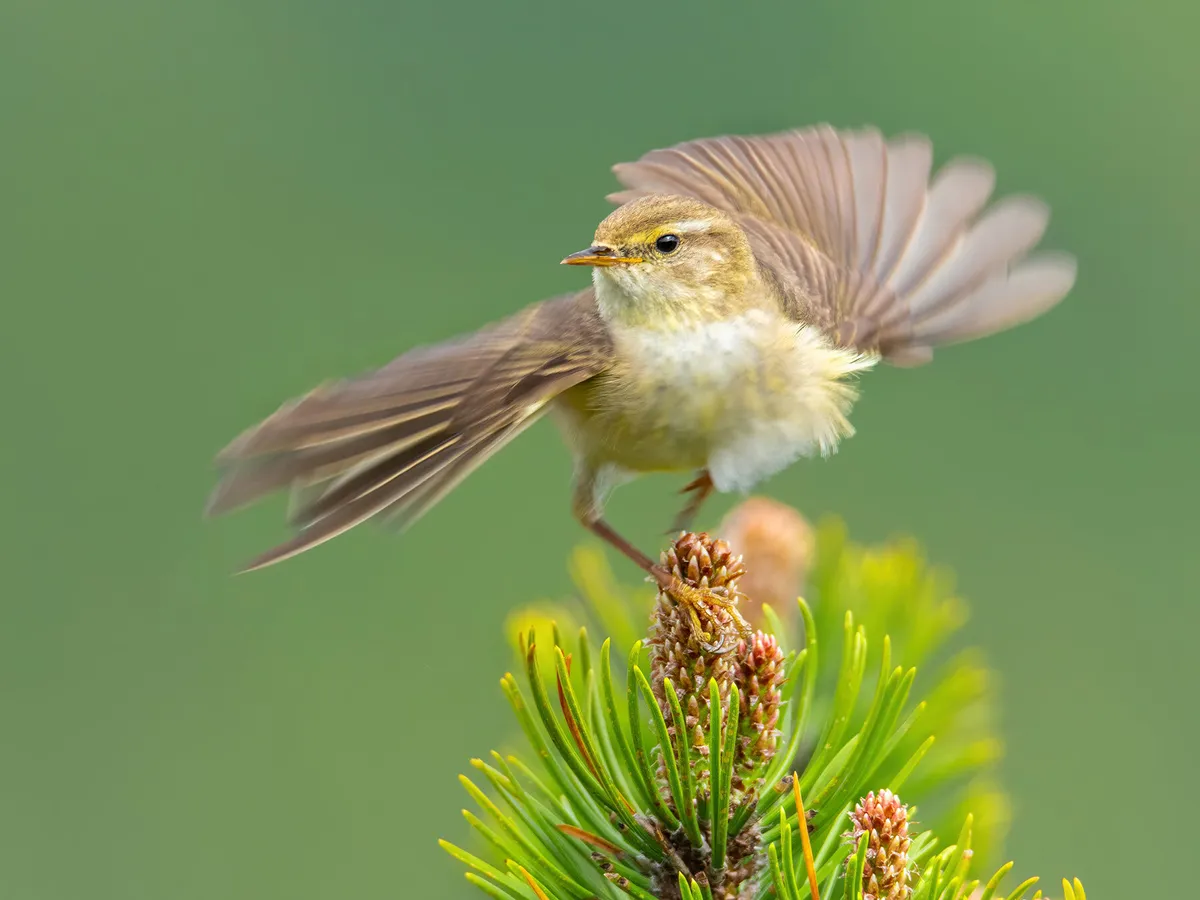
What does a Willow Warbler look like?
A small bird of some 11cm in length, the Willow warbler is primarily soft olive green with a green-grey back and wings. Their breast has a yellow tinge, and they also have a rather distinctive stripe above the eye.
Willow Warblers have reasonably long and pointy beaks for the genus and they have large primary feathers which are likely developed to support their migratory behaviours. Willow warblers are aesthetically similar to Chiffchaffs and they can be notoriously hard to tell apart by looks alone.
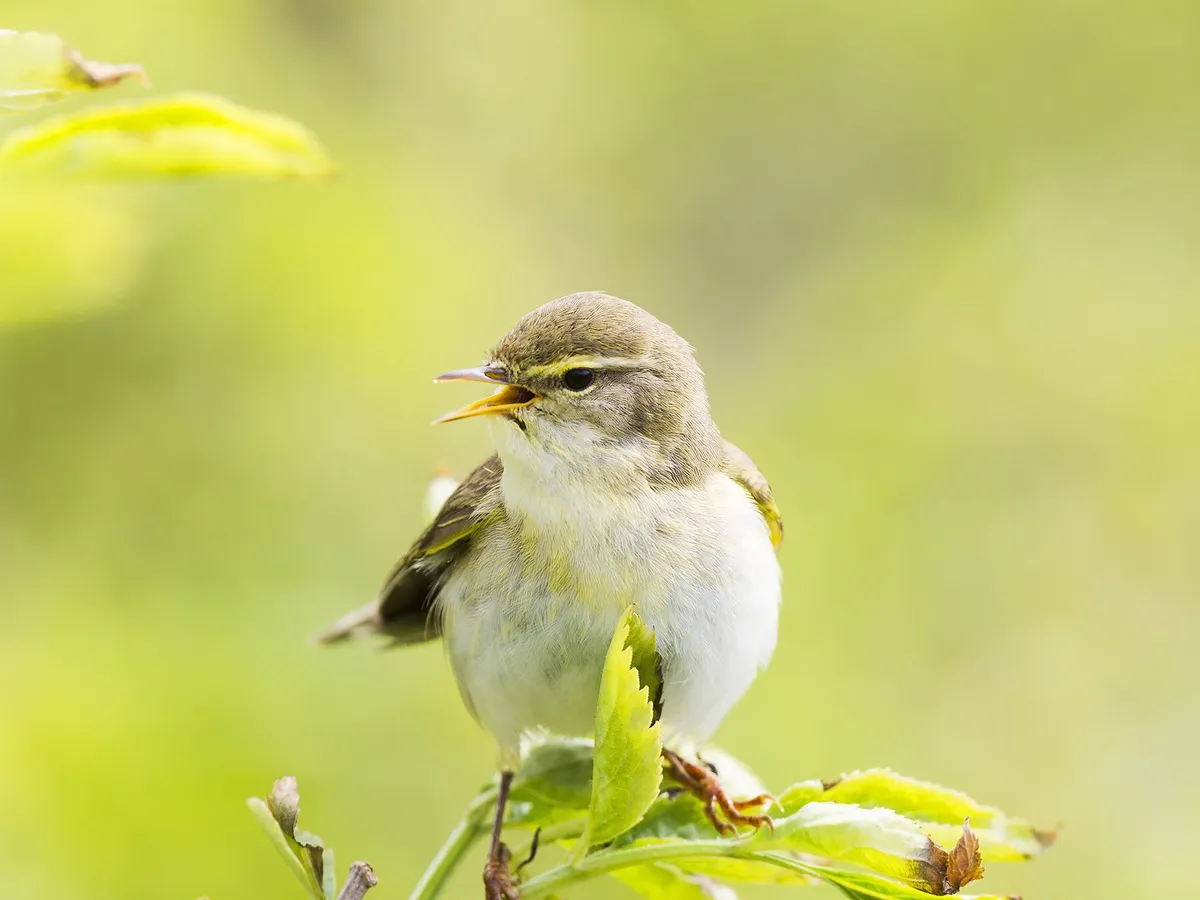
Close up of a Willow Warbler
How big is a Willow Warbler?
Willow Warblers are small birds measuring 11 to 12.5 cm long (4.3 to 5 inches). Most are quite slender in build. They are amongst the smaller of the Leaf warblers, similarly sized to their lookalike the Chiffchaff. Their wingspan is around 19cm (7.2in) on average.
How much does a Willow Warbler weigh?
Willow Warblers weigh around 10 grams (0.35 oz) on average.
What is the scientific name of a Willow Warbler?
The scientific name of the Willow warbler is Phylloscopus trochilus and there are three subspecies; Phylloscopus trochilus acredula, Phylloscopus trochilus trochilus and Phylloscopus trochilus yakutensis.
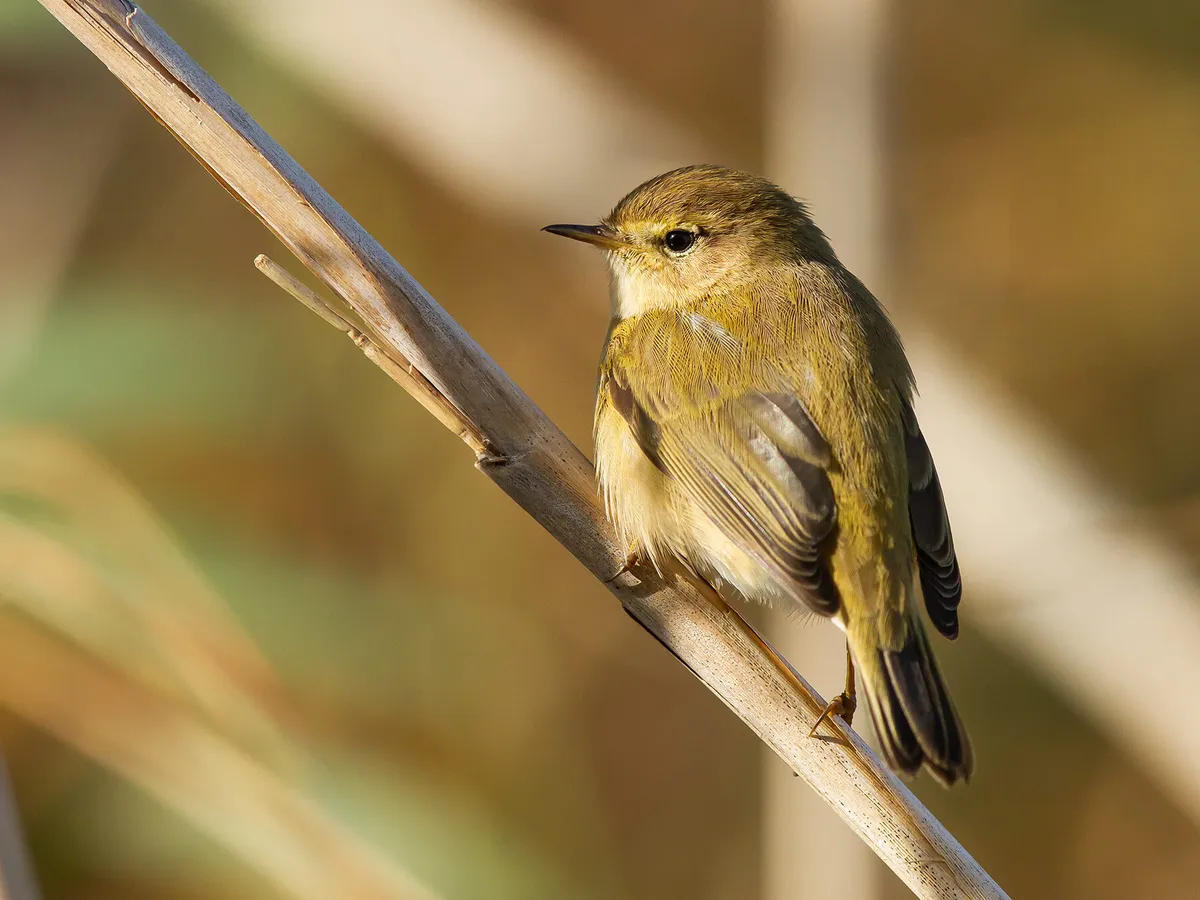
Close up of a perched Willow Warbler
Are Willow Warblers aggressive?
In the upper Northern hemisphere, Willow Warblers are very common with some 34 million breeding pairs estimated to be living in Europe alone. Perhaps unsurprisingly then, compeтιтion between Willow warblers can be fierce. The males are especially territorial and frequently fight other birds that cross their territorial boundaries.
They also typically maintain primary and secondary breeding territories as the males are frequently polygamous. Once their young grow, fledge and become independent, Willow warblers and most other Leaf warblers become more gregarious and frequently join mixed flocks.
How long do Willow Warblers live for?
There is little data on the life expectancy of the Willow Warbler but it’s estimated to range between 1 to 4 years which is around average for a bird of their size.

Willow Warbler on thistle bush
Are Willow Warblers endangered?
Globally, Willow Warblers are currently defined as a species of least concern, meaning there is no pressing risk to their overall population. With over 34 million breeding pairs spread over much of Europe and an estimated 10 to 100 million further pairs distributed across Russia, the Willow warbler is a plentiful species.
In the UK, Willow Warbler populations are decreasing and they’re now listed as an Amber List species.
What does a Willow Warbler eat?
Willow Warblers are primarily insectivorous but will consume some, albeit limited plant material. They mainly consume small bugs and flies like lacewings, damselflies, spiders, ants and snails.
Insect eggs also form a large part of their diet. Insects are caught mainly from the tree canopy, but may also be hunted in the tree canopy or on the ground.
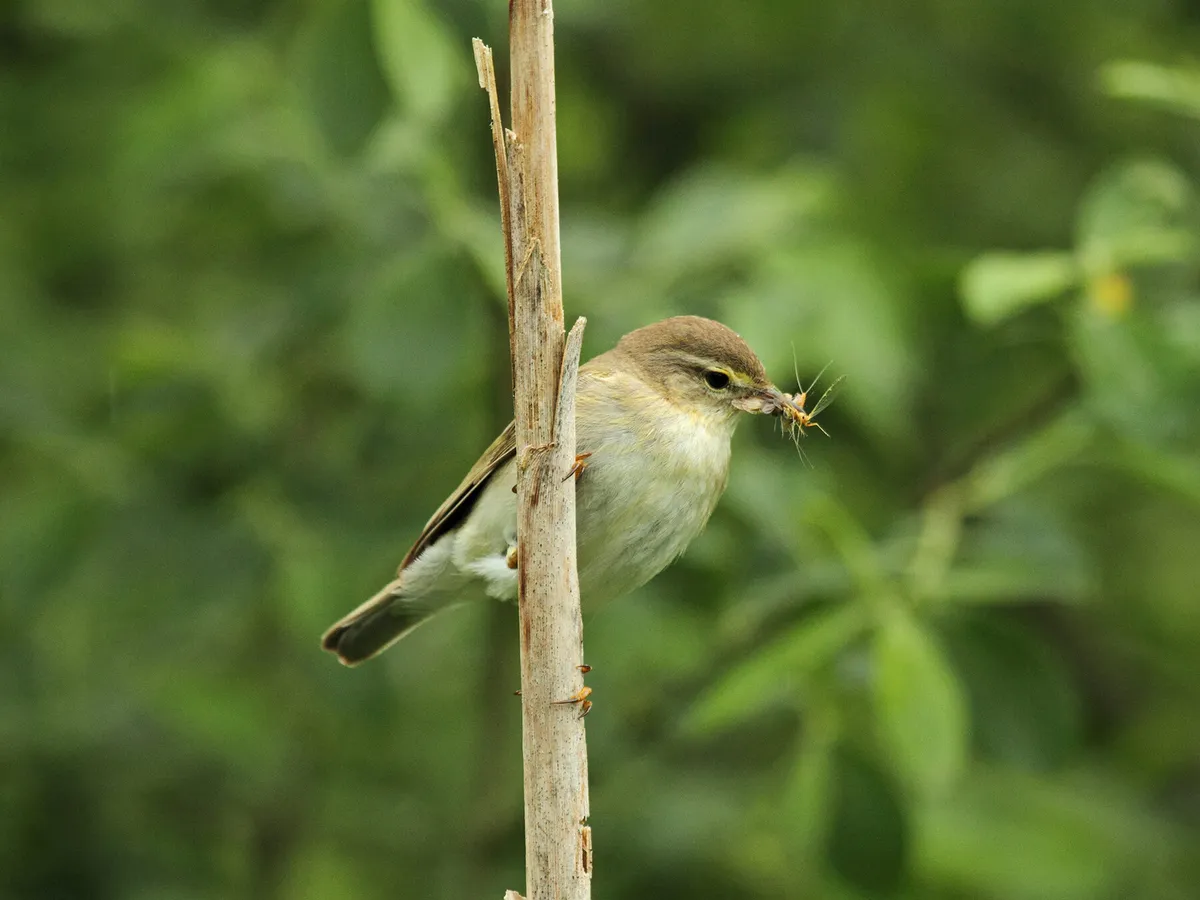
Willow Warbler with an insect
Do Willow Warblers mate for life?
There is some conflicting information as to whether Willow Warblers are monogamous or polygamous, but they likely don’t form lifelong bonds and the male is often observed to be polygamous.
Where do Willow Warblers nest?
The distinctively domed, enclosed and substantial nest of the Willow Warbler is usually built densely by low-lying foliage, or on the ground. They will also nest some 4 to 8m above the ground if a dense bush or other foliage is available. Willow warblers nest primarily in woodlands, forests and other densely foliaged environments where insect populations are also dense, and often stay within reach of water.
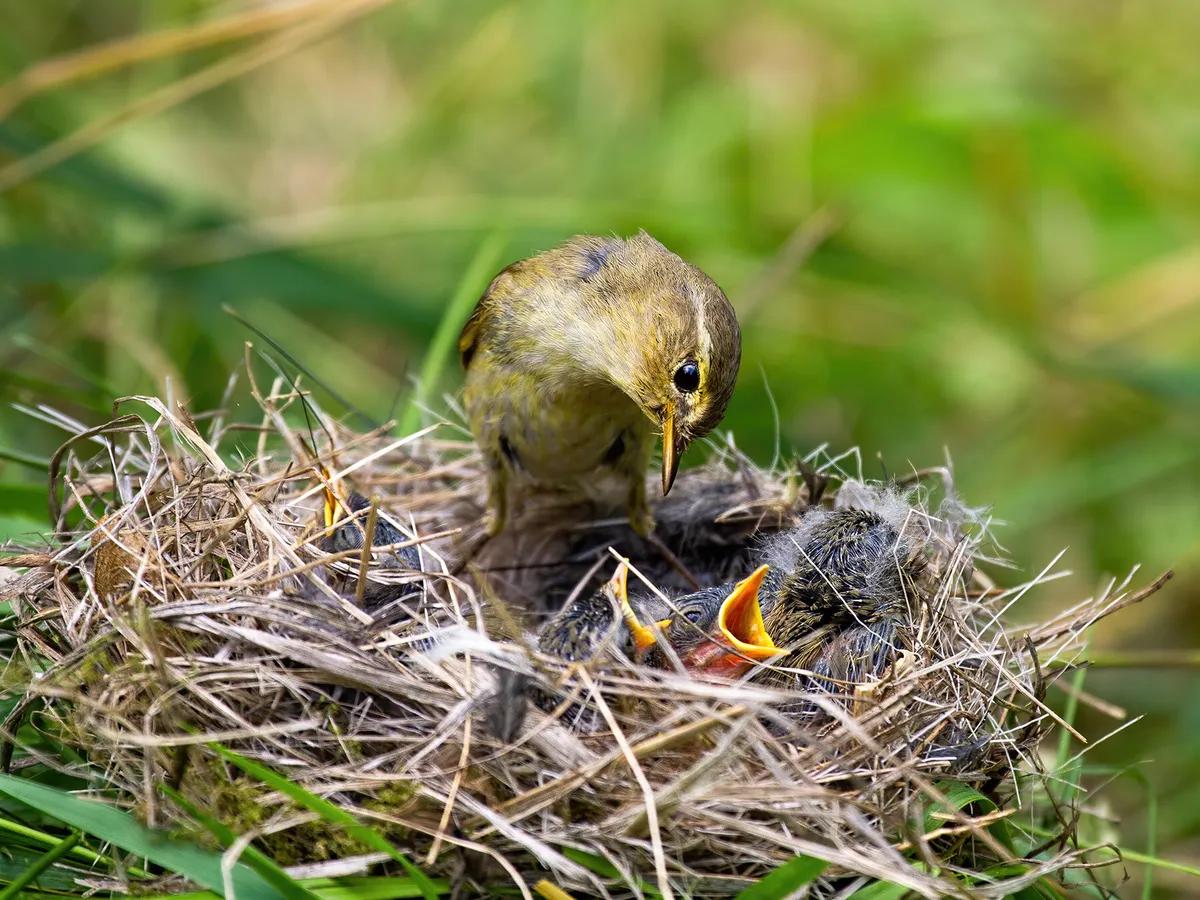
Willow Warbler nest with chicks
How many eggs does a Willow Warbler lay?
The female Willow Warbler generally lays around 4 to 9 eggs per clutch and will lay 1 to 2 clutches a year on average.
What do Willow Warbler eggs look like?
Willow Warbler eggs are very small – 3 eggs likely weigh no more than a one penny piece. They’re generally white and shiny with reddish-brown freckles across the base of the egg.
What does a Willow Warbler sound like?
The literary definition of the word ‘warbler’ itself is a melodic sequence. Willow warblers, like all warblers, are named as such because they are capable of melodic songs.
Their song is mainly composed of short chirps and ascending and descending scales of notes. The pitch of the Willow warbler song is perhaps lower than other birds of similar size.
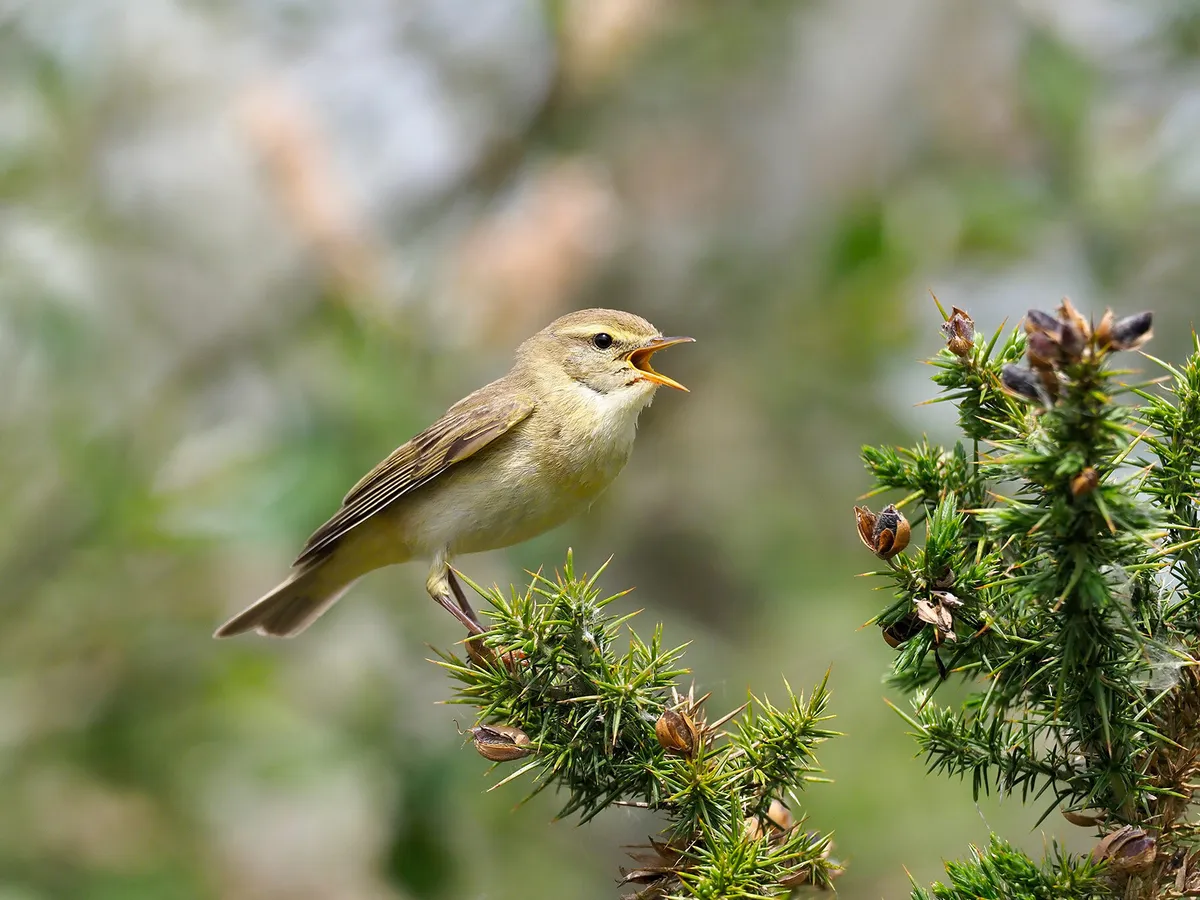
A calling Willow Warbler
Do female Willow Warblers sing?
Female Willow warblers do sing, but it is the males who sing most enthusiastically throughout the breeding season as they try to attract and woo their mates. Songs are also used in territorial behaviour, primarily by males to alert others of their presence and where the boundaries of their territories lie.
What is the habitat of a Willow Warbler?
Willow Warblers tend to choose dense, wooded foliage that is densely packed with insect life. Their nests are typically built in covert locations under dense foliage such as that contained in low-lying shrubs and hedgerows. They are often found near birch, willow and alder trees which tend to grow near rivers and lakes.
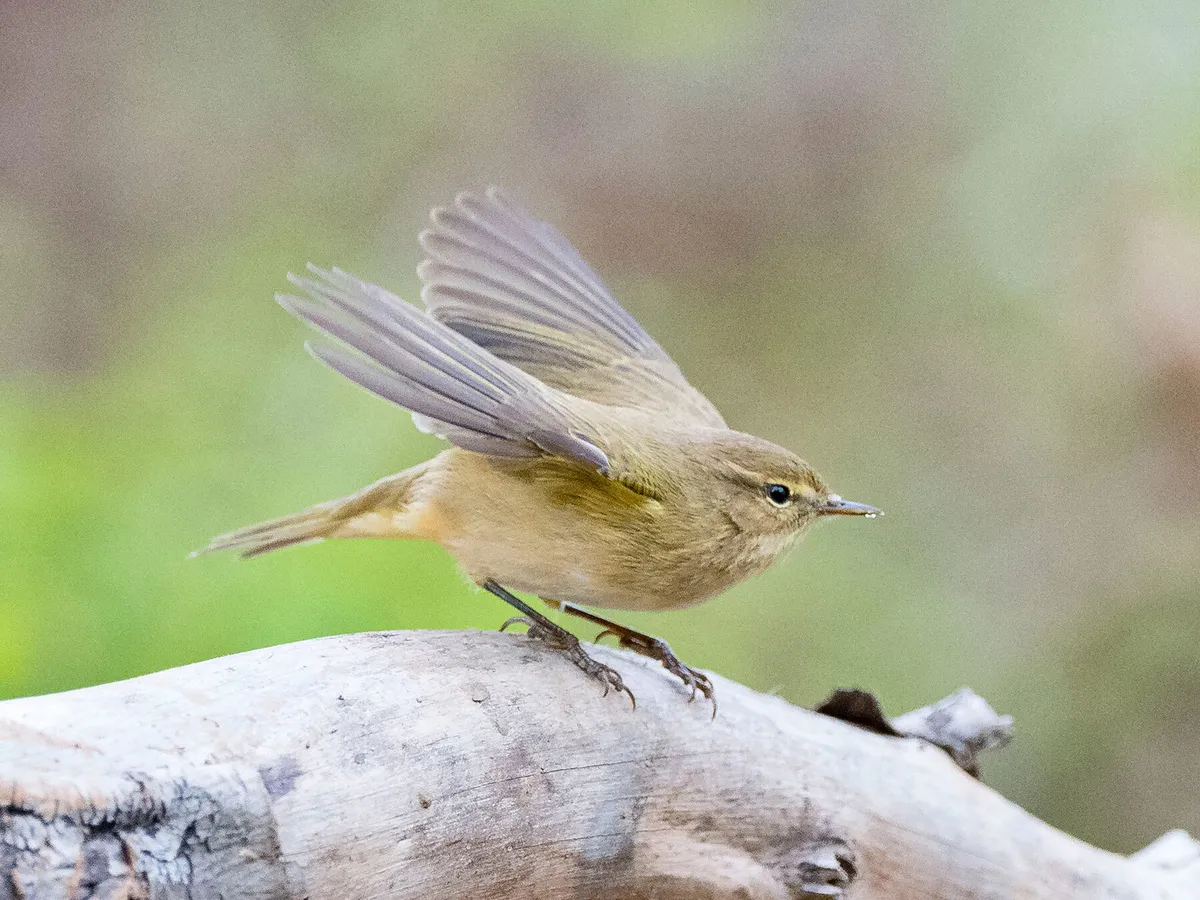
Willow Warbler about to take off
Where can I see Willow Warblers?
Willow warblers are much more common in Scandinavia, Russia and Northern Europe than they are in Western Europe. They appear on European shores around April after wintering primarily in Western Africa.
Distribution
Willow warblers are common across the entirety of northern Europe and Russia, stretching all the way to eastern Siberia in the east and the western tip of Ireland in the west. They live as far north as the arctic tundra. Willow warblers are much less common in southern Europe.
Do Willow Warblers migrate?
Yes, Willow warblers migrate every year after breeding in Europe. They head to Africa and primarily settle on the west coast of the continent, just south of the Sahara, though some populations are found in central and even eastern Africa too.
Willow warblers breed in their temperate northern laтιтude habitats before wintering in Africa. They leave in July through to September and return sometime in March or April. Their migratory patterns are complex and will often involve stopovers in southwest Asia or the Mediterranean.
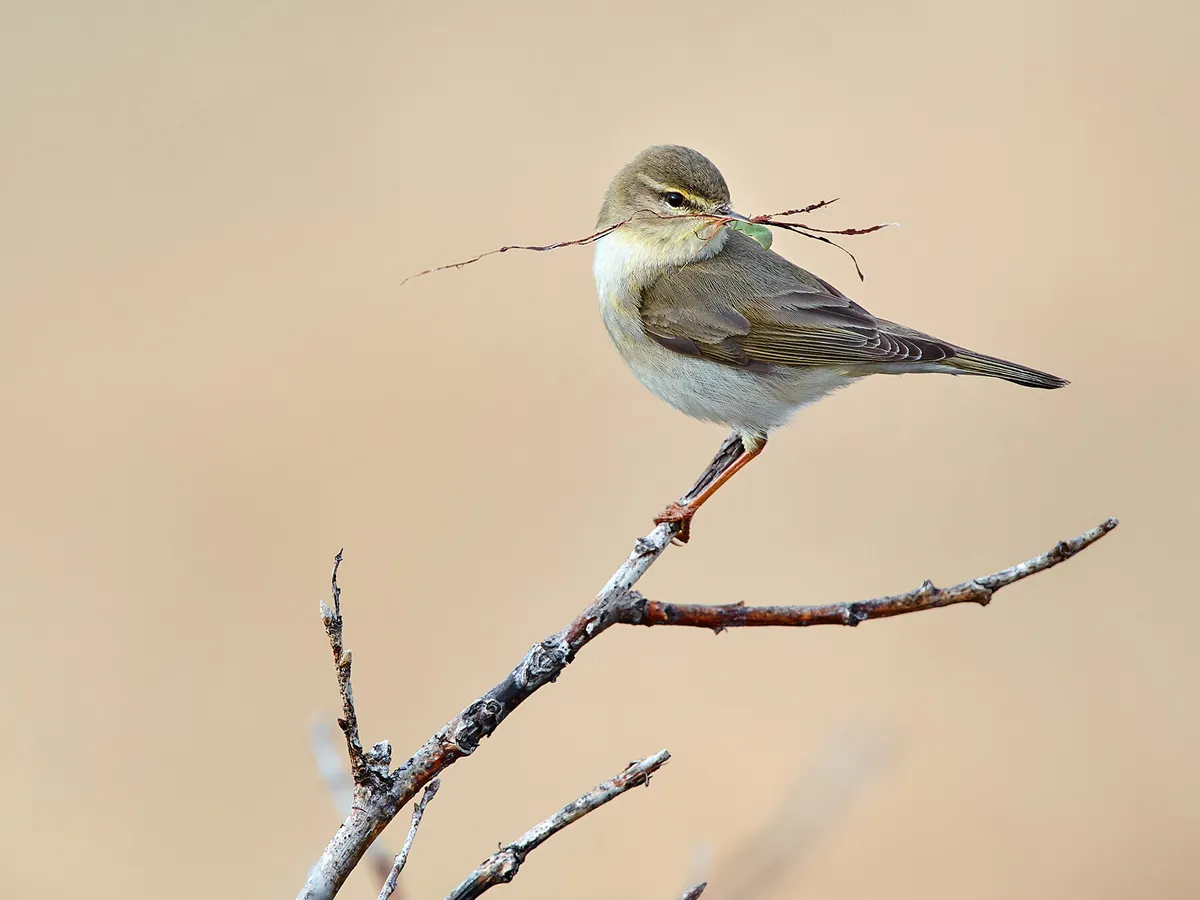
Willow Warbler perched in a tree with nesting material





